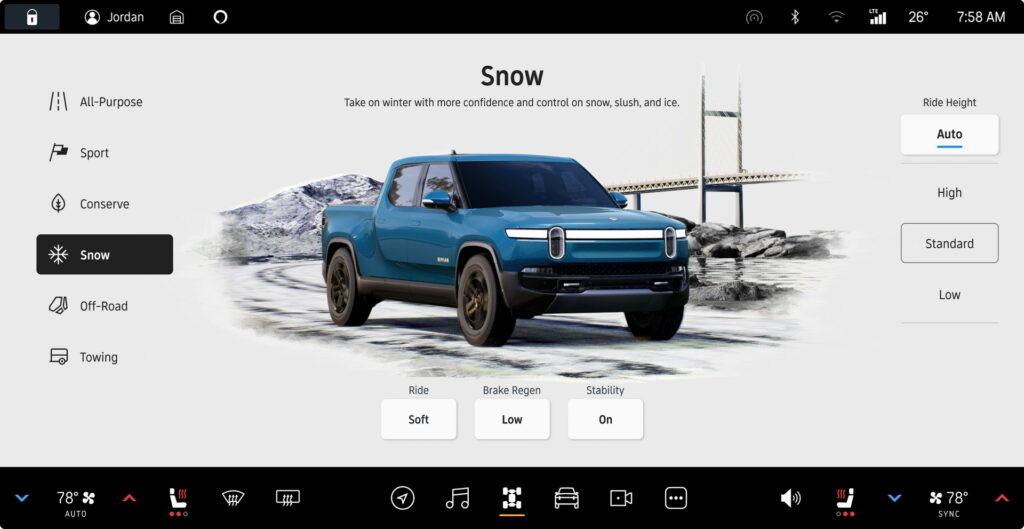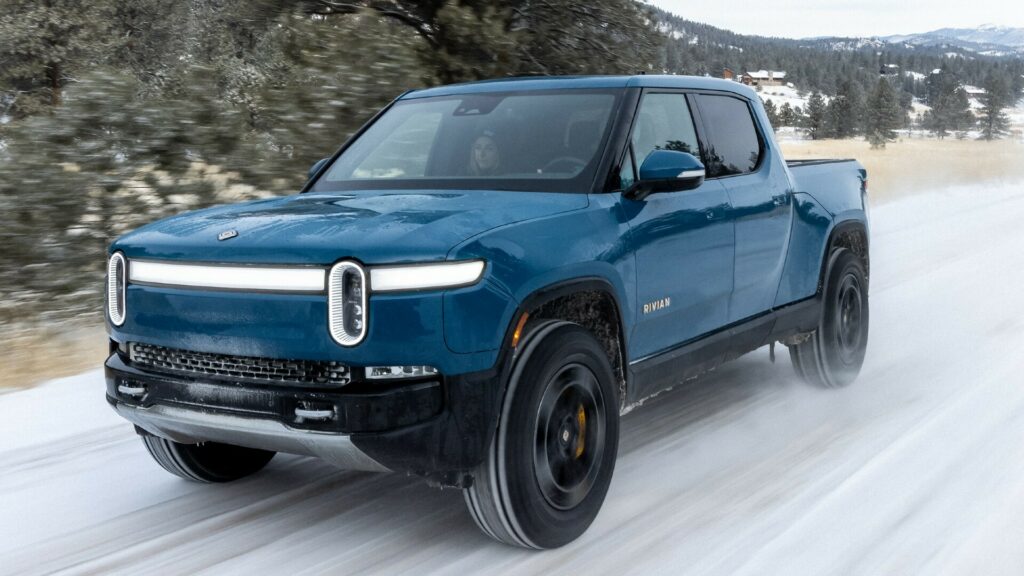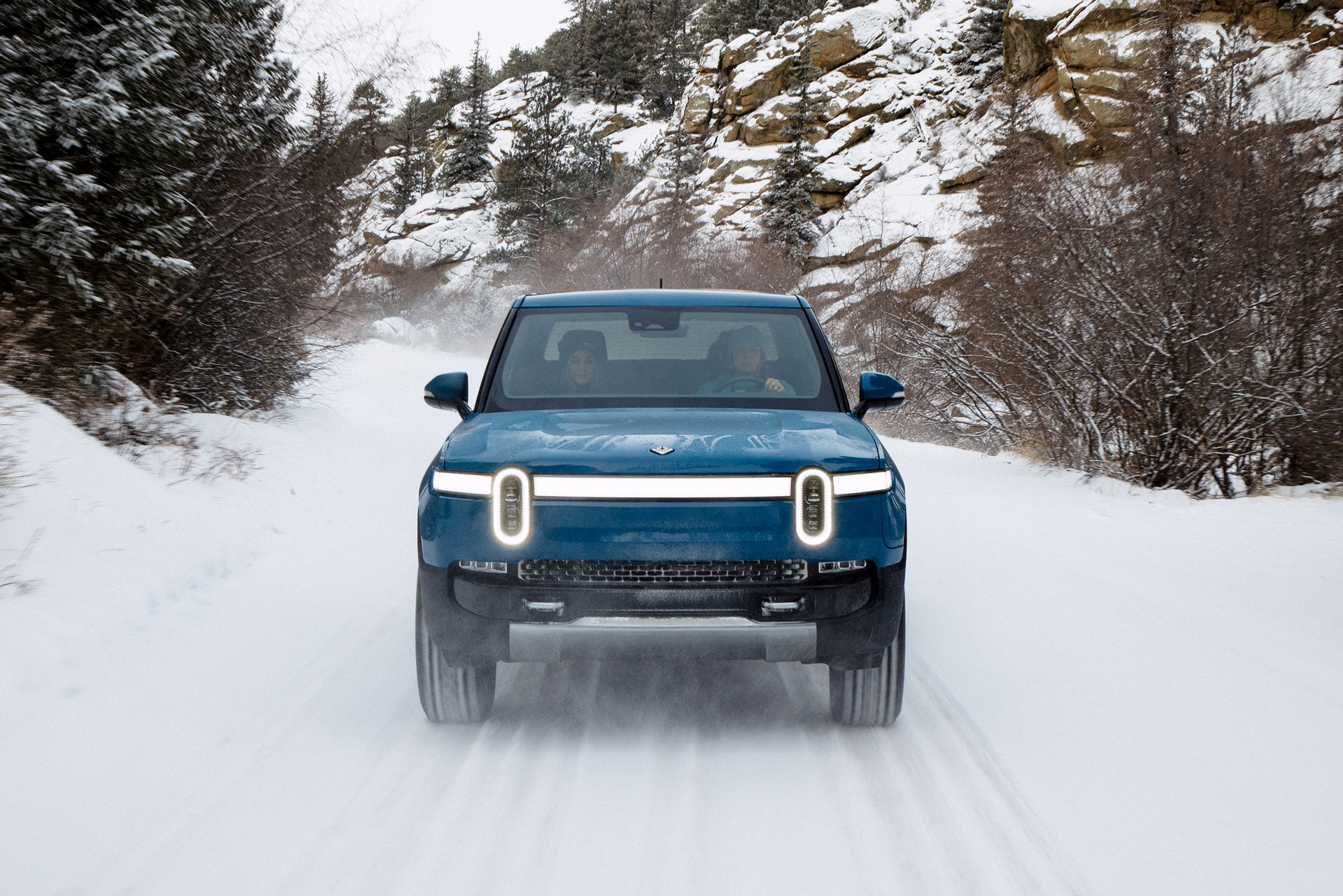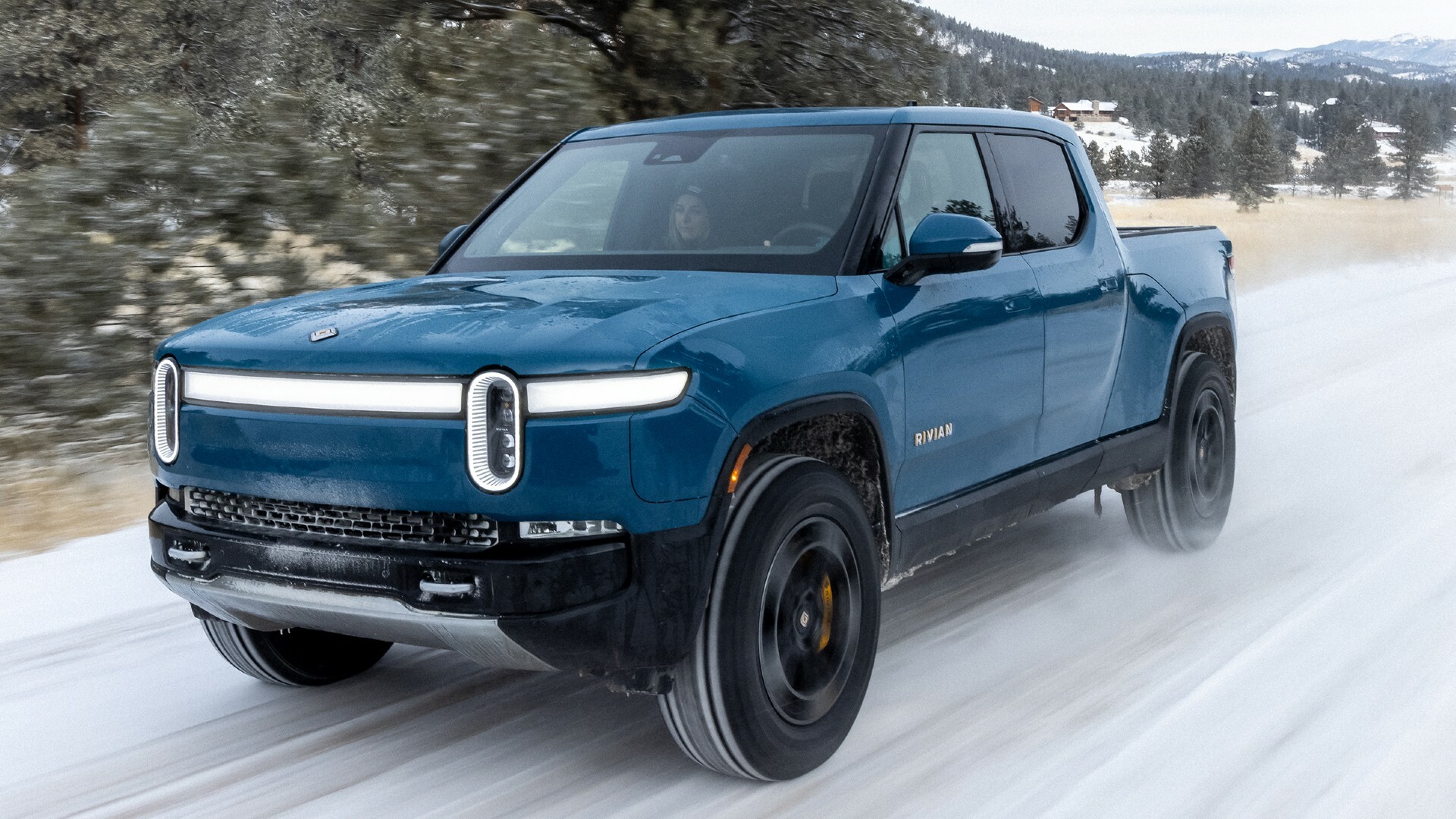The Rivian R1T pickup truck and its R1S SUV counterpart are getting a new over-the-air update, version 2022.47.0. Inside of it, owners will find a new ‘Snow Mode’ that should make navigating winter weather considerably more comfortable and safe. Additionally, Rivian has enhanced a few more features unrelated to snow mode itself.
Go into the ‘Modes’ section screen on the Rivian R1S or R1T and you’ll find that Snow Mode is the tenth and newest of the bunch. When engaged, pedal response is softened for smoother acceleration. A brand new ‘Low’ brake regeneration setting engages as well to reduce slip and improve control in wintery conditions.
Owners can still customize the drive mode to suit their tastes and conditions. That includes changing the regeneration setting, the suspension firmness, and whether or not to have stability control turned on. While snow mode might be the biggest single feature addition in this update, it’s not the only one aimed at improving comfort in the wintertime.
More: 2023 Rivian R1T Electric Pickup Truck Aces Its First IIHS Crash Test

You can now also remotely pre-condition their Rivian vehicle through the mobile app. That includes turning on heated seats, the heated steering wheel, or defrosting the mirrors and windows. Owners must have at least version 1.9 of the Rivian mobile app to use these features.
Rivian has also added address sharing from smartphones to the vehicle itself. Owners can find a charger in the Rivian app and then hit “Share to Vehicle” to send it over to the onboard navigation system. They can also find an address in Google Maps or Apple Maps and share it to the Rivian app which will in turn forward it to the vehicle.
Another new feature is the ability to set independent volume controls for different audio sources. That means that phone calls, media, voice navigation, and Alexa can all communicate at specific and different volumes based on owner preference.
Rivian has also updated its Data and Privacy controls and enabled an option to limit sharing of precise location data should an owner want to do that. The only downside is that by limiting such data, owners lose the ability to use Highway Assist until it’s turned back on.








